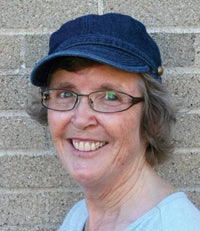Time in Peace Corps serves me to this day
Published 9:18 am Wednesday, June 5, 2013
Column: Creative Connections, by Sara Aeikens
An article published in a Minnesota paper recently shared how the American Heart Association took a stance that a canine companion may improve health and reduce stress.
I grew up around a variety of cats, especially kittens in litters of four or more, but no dogs, which resulted in being partial to cats. When I joined the Peace Corps in 1964 and received an assignment in Venezuela, South America, a dog became my daily companion and learning to love him helped me cope with all the life shocks I experienced each day of my two-year foreign service.
In the small village of La Mesa de Ejido, the family I lived with encouraged me to use their large Labrador dog as my walking partner for home visits to co-operative members.
I don’t even recall the dog’s name, but I have vivid memories of our treks up and down the main mountain road from our home to the home of my Peace Corps co-worker who lived just a block away from the village square.
The main focus in the square was the church. I attended Catholic worship services there and heard homilies in Spanish, in contrast to hearing English sermons at the Presbyterian Church in Minot, N.D. Because my co-worker came from a Jewish background, I also learned about her faith and customs in contrast to my Christian religion. She was from Washington, D.C. We also compared differences in her Eastern choice of English words to my Midwestern idioms words. I recall that she put the teakettle up while I put the teakettle on.
My dog companion provided me not only with a sense of safety and familiarity but also helped me survive just fine outside my comfort zone. I felt secure growing up in Minot. When I told my parents I’d signed up for the Peace Corps program, my mother suggested I volunteer instead to work with the Native Americans on a reservation in my home state, instead of going abroad.
When I chose this unknown adventure just a year out of college, I did not realize how much I would learn, benefit and enrich my own life in the process of aiding others.
Specifically, I found myself in a very different culture that still, in many ways, appeared like my own. My Peace Corps dog companion could represent all those other adjustments I chose to make during my two-year service. Since the training turned out to be very thorough, I had good preparations, thanks to the U.S. government. Spanish language classes in Denver and in Patzcuaro, Mexico, gave me plenty of practice in both understanding and communicating in the language.
The benefits unfolded, not only in my village work, but pop up almost weekly in Albert Lea, when I use my skills to both understand and interpret the thoughts of Spanish speakers I run into during my daily activities and my work. Later on when I traveled again to Spanish-speaking countries, knowing the language greatly enhanced the trips.
Although the several houses my Peace Corps partner and I occupied during our stay provided for all of our basic needs, adjusting to some things was more difficult. We often heard the rushing stream directly outside our kitchen wall. We got used to the sound, but it stopped in the afternoons when our water supply would be diverted to irrigate the small farm fields on the mountainside. We had indoor plumbing, but when the stream cut off, we couldn’t flush the toilet or take a shower, which always gave us cold water when it worked.
Our drinking water came from running water faucets, but we always boiled it. Even though my housemate watched her hygiene habits carefully in the village school facility where we lived together for the majority of our village stay, she became ill and had to recuperate for a time in the U.S., but was able to return to village site.
Habits having to do with food sometimes fell outside my comfort area. Breakfast often turned out to be a fat, very thick corn tortilla called an arepa, which I finally learned to savor by the time my Peace Corps stint ended. I eventually enjoyed the staples of cooked rice, beans, hot peppers and chorizo (stuffed sausage links), without missing mashed potatoes, gravy, roast beef, asparagus and rhubarb pie.
I never appreciated the yucca plant much or the fried bananas that can’t be eaten raw, but to this day still seek out flan custard at grocery stores. Back then I rejoiced at being able to munch on fresh pineapple I harvested from the plant or peeled and sliced an orange or mango after plucking it from a tree.
When we saw the fiber shoe soles some villagers made, we decided to encourage the women to extend their creativity with fiber products from the numerous sisal plants that grew on the mountainsides. We guided women in a handicrafts cooperative we helped them organize after they started to make other items — placemats, coasters, belts, hats and even rugs — that they were able to sell to tourists. Some women began to earn twice as much as their farmer husbands, opening up other cultural issues. I also saw how the village cooperative loans we educated members about helped farmers and families become owners of sturdy handmade clay block homes.
The dog trailing behind me in the Venezuelan mountain village became a positive reminder that I could adapt to a different culture and new customs just as the villagers did. I learned patience from all of them as almost everyone and their dogs took an afternoon siesta, refreshing the mind as well as the body.
Throughout the experience, I became less fearful of change and the unusual, and more open to the unique or things I at first didn’t understand. Today I live on a street of only a dozen houses and perhaps a half-dozen dogs. A half a century later back here in the Midwest I enjoy the neighborhood dogs, but I do miss the hee-haw of the donkeys.
Sara Aeikens is an Albert Lea resident.



